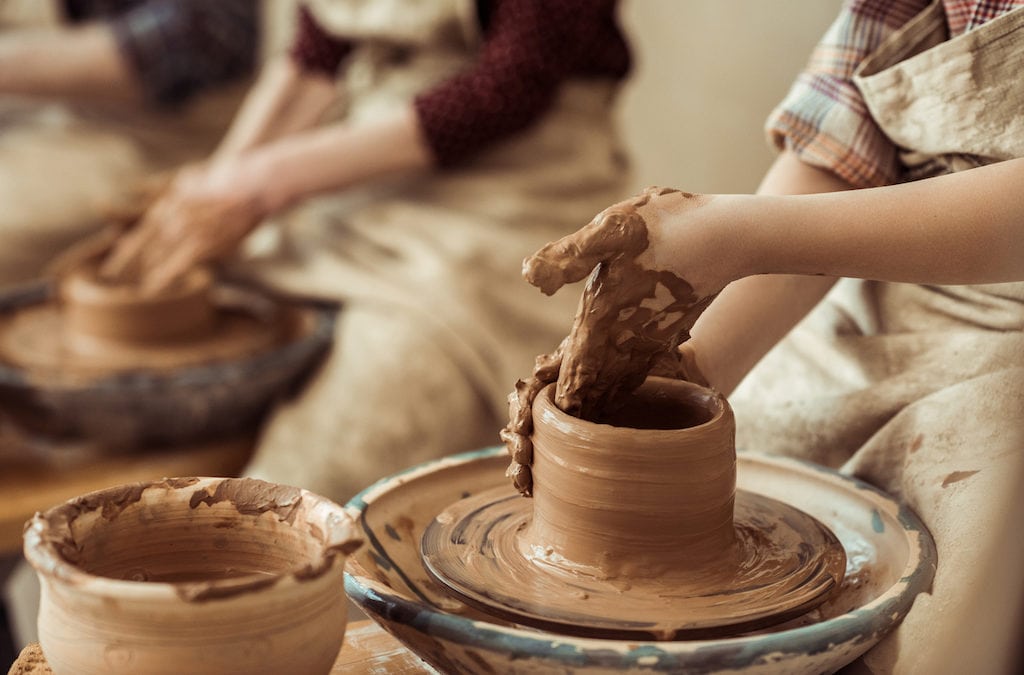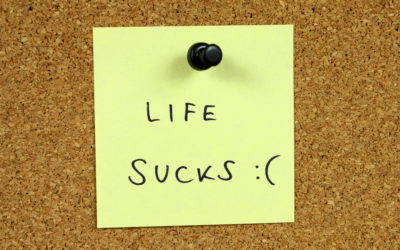Perhaps my favorite thing to complain about is people copying my work without credit. Although I know it’s intended as the sincerest form of flattery, there are times where I misinterpret it as laziness, a lack of faith in their own creative genius, or simply theft.
My favorite example, now many years in the past, was a man in Australia who not only copied my website word for word, he copied my bio, substituting only his name. When I marveled at the fact that he too had children named Oliver and Clara, I did a bit more research to discover that he was neither married nor a father.
When I’m feeling particularly riled up, I fantasize about announcing a course called “How to Be Original” and starting a stopwatch to see how quickly someone else climbs aboard and offers a similarly titled course with the same premise and slightly altered versions of my bullet points, not realizing that I fired each one of them onto the page from the gun of my own frustration.
But putting my psychological immaturity to one side, it strikes me that in a world where so many of us are genuinely looking to give voice to our creative potential and make our mark in and on the world, learning how to be original has a genuine value.
So here’s the short course:
“Original” is not the same as “different.”Click To Tweet
There is a theory in Hollywood movie making circles that the glut of child-centered family comedy films in the early ‘90’s was not so much the result of the popularity of “Home Alone” as it was the unexpected box-office success of the critically panned movie “Problem Child”. The explanation given by one exec was that “Home Alone” was a great movie, so the fact that it did well didn’t tell you anything about what audiences would go to see. “Problem Child”, by contrast, was even hated by many of the cast and crew who worked on it, so the fact that it drew audiences to the theatre anyways was considered significant.
What followed were a host of “different” versions of the same movie, each with a minor twist in characterization, plot, and storytelling, a trend we can see today in the spate of superhero movies enjoyably clogging up movie theatres around the world.
So if you want to be “different”, you simply need to take what’s already been created and tweak it enough to not be liable for copyright or trademark infringement. This happens in nearly every arena of creativity and product development, from bubblegum pop songs to competing brands of bubblegum and from Ford vs. Chevy to Uber vs. Lyft.
But for something to be original the focus needs to be not on what already exists in the world but on something else entirely…
Original, in its simplest form, means “from the point or place where something begins, arises, or is derived.”Click To TweetOr as the architect Antonin Gaudi put it:
“Original consists of returning to the origin.”
So to create something truly original, we must look away from the form of that which has already been created and look instead to “the origin” – the source of creativity itself.
Here’s how I wrote about it in Creating the Impossible:
For thousands of years, people have been trying to understand the source of creativity – the spark of life that brings ideas to mind and allows us to launch those ideas into the world. In ancient Greece, that creative force was personified as the nine muses, daughters of the Greek god Zeus and his lover Mnemosyne, who was herself the personification of memory. Early Christian teachings, on the other hand, suggested that only God himself could create. That form of creation was called ex nihilo – creating ‘from nothing.’
And this is at the heart of every creative endeavor. Whatever we call it and what or whomever we attribute it to, there is one fundamental truth behind creation:
Everything comes from nothing.
‘Nothing,’ in this sense, is an almost imperceptible abbreviation of the space of ‘no thing’ – a way of describing the formless creative energy of the universe before any ‘thing’ has been created with it. It’s the as yet unformed lump of clay, the play dough of possibility out of which everything will be made before it is unmade again and goes back into its container to stay fresh for next time. It exists in stark contrast to ‘the little nothing’ of our own thoughts, filled with the content of our own already formed hopes, fears, judgments, and recriminations.
What that means is that any time we want to create something truly new and fresh in the world, we must go beyond the noise of our own mind and into the quiet of the fertile void out of which all things come into being. We need to find the silence beneath the notes, the page beneath the writing, and the space into which our thoughts appear and dissipate.
That space is closer than we think, and larger than our little brain (well, my little brain) can imagine. It’s a Big Nothing. We won’t find anything when we get there – that’s just the nature of nothing – but it is a field of pure potential, an unplowed field so fertile that we need only drop the seed of an idea into it and it will spring to life and begin to grow almost immediately.
We can’t see it, but we can get a feel for it. We can touch it by letting it touch us, letting it gently cocoon us in a blanket of life and possibility. It is whispering inspiration into our ear even now.
And while staring into the fertile void can be almost hypnotic, at a certain point we wake up from its depths and feel the impulse to create.
The beauty of creating original work – that is, work arising from the origin point of all creation – is that whatever comes from that place carries with it the flavor of its source.
And in the same way as we can kind of taste the hate in work done grudgingly for the sake of meeting a deadline or getting things done, we can taste the love in work done for the joy of going to the well of nothing and seeing what comes up fresh in each and every moment.
As the poet Robert Frost wrote:
“No tears in the writer;
No tears in the reader.”
With all my love,
![]()





